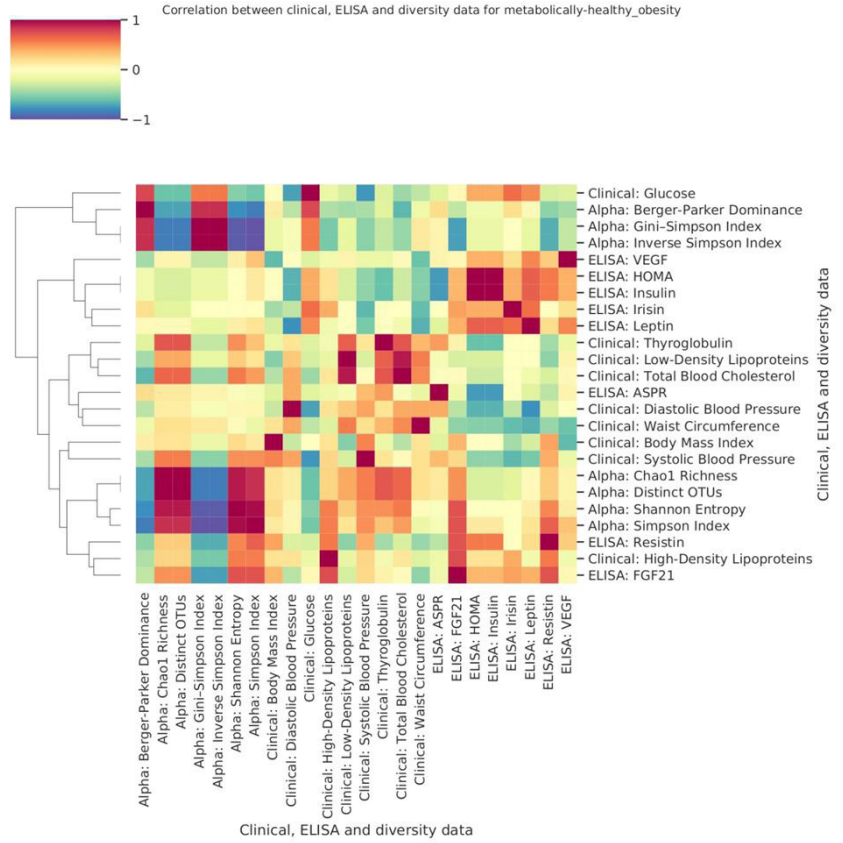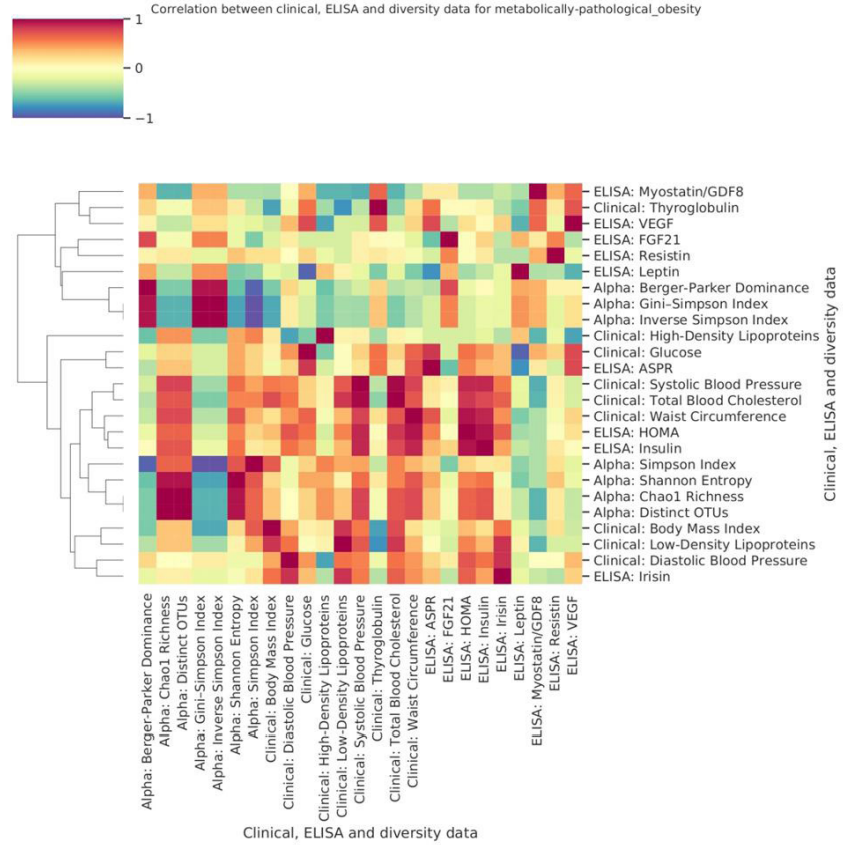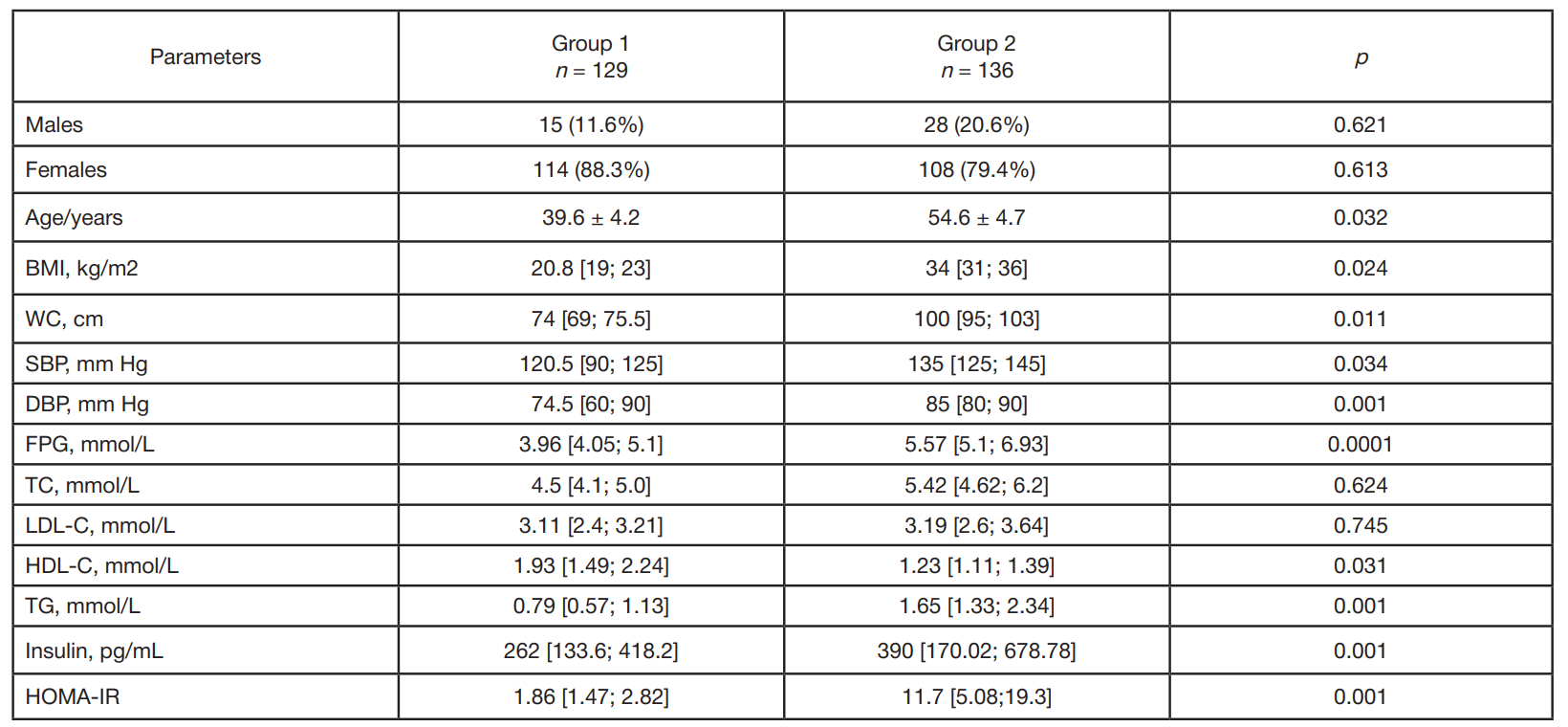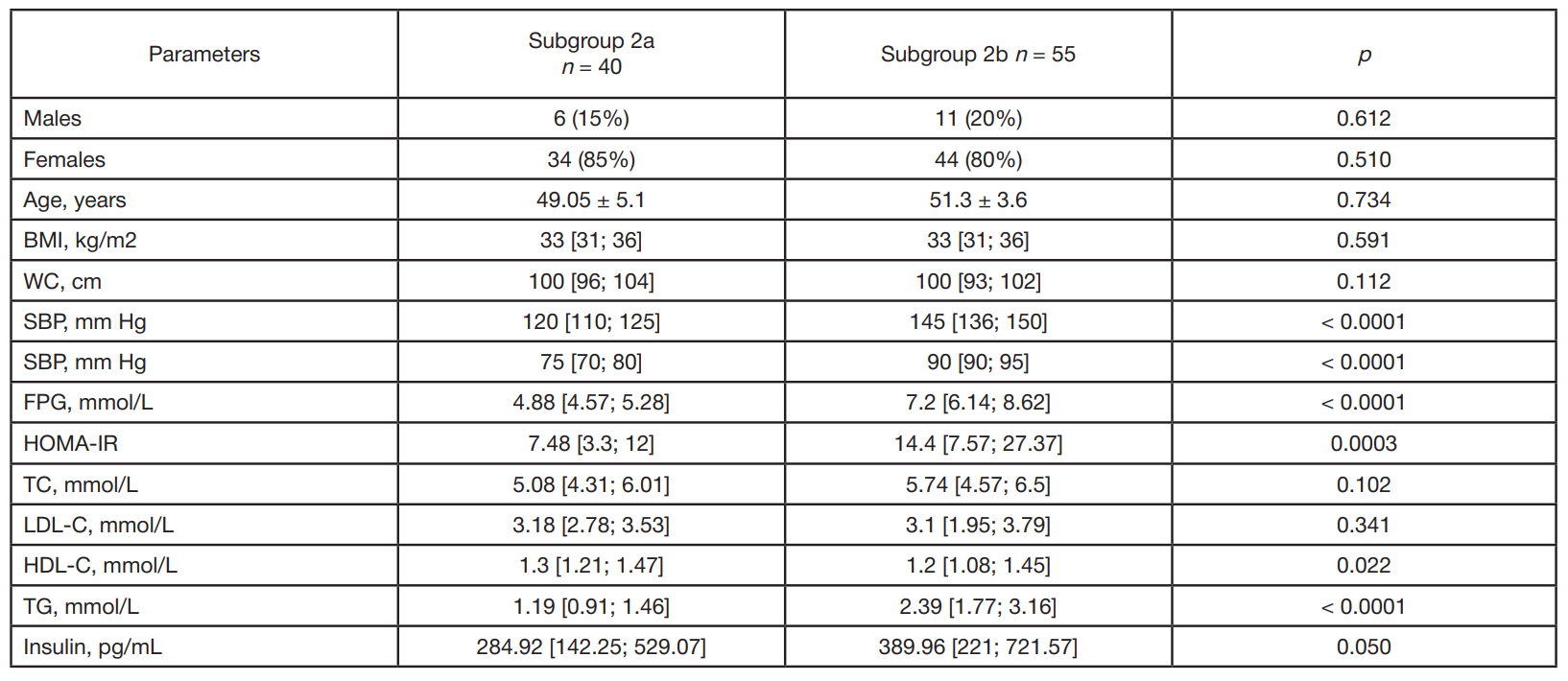
This article is an open access article distributed under the terms and conditions of the Creative Commons Attribution license (CC BY).
ORIGINAL RESEARCH
Adipokines and myokines as indicators of obese phenotypes and their association with the gut microbiome diversity indices
1 Rostov State Medical University, Rostov-on-Don, Russia
2 Center for Molecular Health, Institute of Digital and Translational Biomedicine, Moscow, Russia
3 Pirogov Russian National Research Medical University, Moscow, Russia
4 Kazan Federal University, Kazan, Republic of Tatarstan, Russia
Correspondence should be addressed: Lilia A. Ganenko
Nakhichevansky pereulok, 29, Rostov-on-Don, 344022, Russia; ur.xednay@ailil.oknenag
Funding: the study was conducted as part of the State Assignment № 0373100122119000041, the project “Creation of a bank of blood serum and fecal samples from healthy donors and patients with obesity, metabolic syndrome, type 2 diabetes mellitus, impaired mucosal barrier of the gastrointestinal tract with the aim of identifying candidate species-specific mediators of quorum sensing microbiota systems human modulating endocrine and metabolic function of adipose tissue”.
Author contribution: Ganenko LA — study concept, data acquisition and analysis, manuscript writing; Volkova NI — research planning and management, manuscript editing; Roumiantsev SA — study design, manuscript editing; Grigoryeva TV — working with the database, analysis of the results; Laikov AV — data analysis and interpretation of the results; Vasilyev IYu — study concept, manuscript editing; Gaponov AM — literature review, study design, manuscript editing; Naboka YuL — data analysis and interpretation of the results, manuscript editing; Shestopalov AV — search for sources of funding, working with data sets, statistical data processing, manuscript writing.
Compliance with ethical standards: the study was approved by the Ethics Committee of the Rostov State Medical University (protocol № 20/19 of 12 December 2019); the informed consent was submitted by all study participants.







